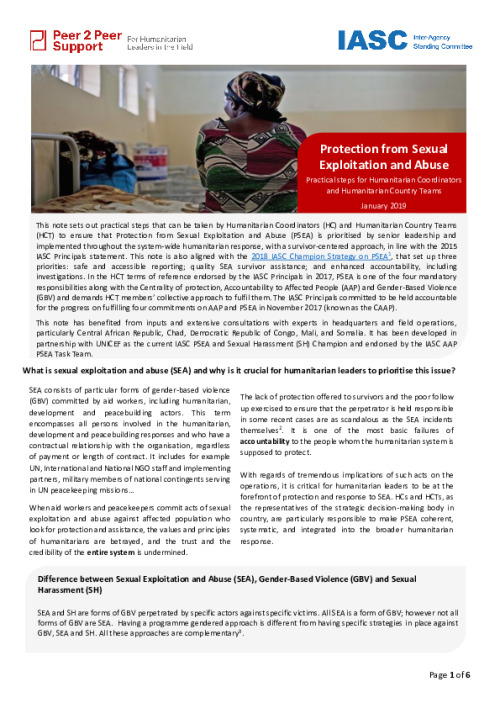
P2P PSEA Guidance Note
This note sets out practical steps that can be taken by Humanitarian Coordinators (HC) and Humanitarian Country Teams (HCT) to ensure that Protection from Sexual Exploitation and Abuse (PSEA) is prioritised by senior leadership and implemented throughout the system-wide humanitarian response, with a survivor-centered approach, in line with the 2015 IASC Principals statement. This note is also aligned with the 2018 IASC Champion Strategy on PSEA1, that set up three priorities: safe and accessible reporting; quality SEA survivor assistance; and enhanced accountability, including investigations. In the HCT terms of reference endorsed by the IASC Principals in 2017, PSEA is one of the four mandatory responsibilities along with the Centrality of protection, Accountability to Affected People (AAP) and Gender-Based Violence (GBV) and demands HCT members’ collective approach to fulfil them. The IASC Principals committed to be held accountable for the progress on fulfilling four commitments on AAP and PSEA in November 2017 (known as the CAAP).